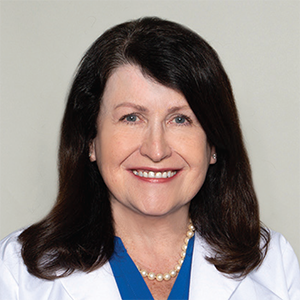Olwen Kelleher-Gurry, MSN-RN
Danbury Hospital

Bio
Olwen Kelleher-Gurry, MSN-RN has been in the nursing profession for over 29 years and is originally from Ireland. Olwen received her Master of Science degree as a Clinical Nurse Leader from Fairfield University, Fairfield, Connecticut. Olwen received her Bachelor of Science degree in Nursing from Western Connecticut State University (WCSU) in Danbury, Connecticut. During nursing practicum senior year at WCSU, Olwen was instrumental in mandating screening for Congenital Heart Defects in Newborns in the State of Connecticut testifying for Senate Bill # 56. Danbury Hospital was the first hospital in the State of Connecticut to mandate this screening.
Olwen is a clinical nurse leader with many years of experience providing expert nursing care directly or indirectly for patients with complex needs while advancing professional practice through teaching, consultation and research. Many of those years spent at Danbury Hospital. Olwen is a Staff Development Clinical Specialist in the Emergency Department at Danbury and New Milford Hospitals improving the quality of care by influencing the practice of staff. She is the Training Center Coordinator for the American Heart Association and is a certified BLS, ACLS and PALS instructor. Olwen also plans and teaches many courses required by multiple departments at Nuvance campuses. Olwen is a Clinical Adjunct Instructor for nursing students at Western Connecticut State University. She is also a Team STEPPS master trainer for Nuvance Health. In April of 2020, Olwen helped open the Nuvance Health Convalescent Plasma Donation Center at Danbury Hospital to meet demands and to rapidly increase available plasma during the initial Covid 19 pandemic.
Olwen has served on local non-profit Boards including Matthew’s Hearts of Hope and is actively involved in Mission Health Day in the Greater Danbury Area. Olwen is a member of the nursing honor society, Sigma Theta Tau both Kappa Alpha Chapter and Mu Chi Chapter. She is also a member of the Association for Nursing Professional Development and the Emergency Nursing Association. In 2021, Olwen was selected by Nuvance Health’s Patricia A. Tietjen, MD Teaching Academy as an inaugural scholar to enhance learning and strive to close the achievement gap making education available to everyone while improving patient care.
